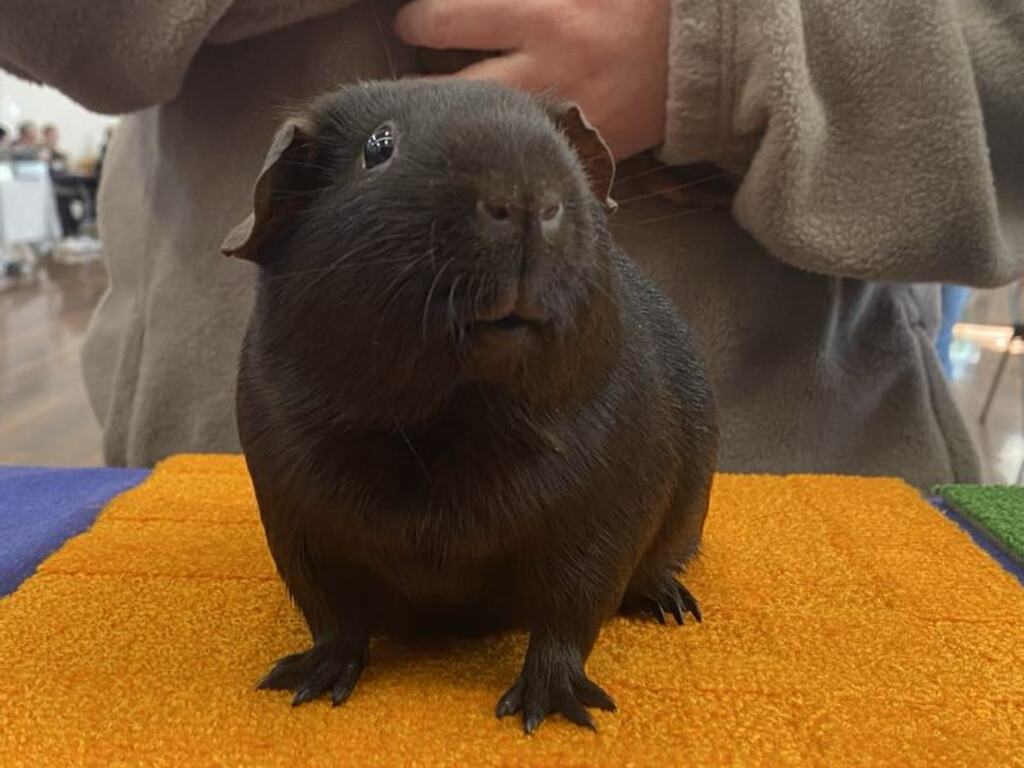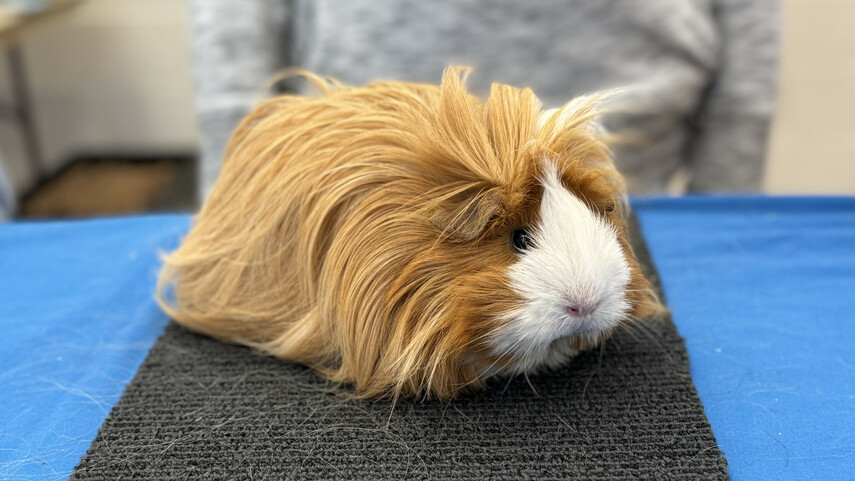Did you know that the correct name for a Guinea Pig is a Cavy (pronounced kay-vee)?
Cavies are social animals and are best kept in pairs. Two sows (females) can be kept together, but boars (males) are more likely to fight if not raised together from a young age.
Housing Tips:
Hygiene:
Water and Diet:
Handling:
Lifespan:
The CCV offers nail trimming and mite treatment for $10 a cavy. This is done by an experienced club member.

Cavies are social animals and do well in pairs or groups, very rarely are they fine solitary. Females can live in herds together. Females may still hump each other when coming into season or sorting out hierarchies in herds. Older sows when being bonded together may fight and be aggressive so ensuring plenty of cage space is important when initially bonding. Desexed boars in a herd of females can be a good social mediator to stopping sows squabbling when in season (sows come into season every 2-3 weeks).
Boars are best kept in pairs and once bonded get along very well. It is not recommended adding an additional boar or boars to a bonded pair as it may cause them to fight and the original may lose its bond permanently. Boars can be bonded together at various ages, two younger boars can be bonded together easily along with a baby boar and mature boar. Extra care must be taken to ensure matching of personality when bonding boars of similar ages. Bonding younger boars to adult boars can generally be easier for all parties involved. When bonding boars or for a very dominant boar, ensuring 2 water bottles and food bowls stops resource guarding and creates a happier pair!
If choosing to keep multiple cavies ensure bonded boars are kept separate from sows as the boars will be able to smell when the sows come into seasons and could trigger fights. Bonded pairs of boys can be kept next to each other however a gap to stop fence fighting is recommended.
Housing Ideas
High-quality grass hay, such as oaten, rye, clover or meadow hay, should make up the majority of your guinea pig's diet. Hay is essential for:
Choose high-quality guinea pig pellets that are fortified with vitamin C. Avoid those with added seeds, nuts, or coloured bits, which can lead to selective feeding and obesity. Pellets should be given in limited quantities to prevent overeating.
Guinea pigs need a variety of fresh vegetables daily for vitamins and hydration. Focus on leafy greens and vitamin C-rich options, such as:
Unlike most animals, guinea pigs cannot produce their own vitamin C, making it a crucial part of their diet. Pellets containing Vitamin C should be an essential part of their diet. Fresh vegetables high in Vitamin C should also be offered frequently to maintain adequate levels. Young and older cavies need higher levels of Vitamin C to maintain health so this should be taken into consideration.
Ensure your guinea pig has access to fresh, clean water at all times. Use a water bottle or a sturdy bowl, and clean it daily to prevent contamination.
Cavies love grass and it can be a great substitute for vegetables! When harvesting grass for your cavies never use lawn mower clippings as it can cause bloat and release toxins from the blades. Simply pick grass by hand or with scissors. If you are going to feed grass instead of vegetables you want to give at least a heaped mound. Grass does contain Vitamin C!
Cavies are not fans of the heat and are not a fan of Australian heat waves. Here are some tips and tricks to keep your cavies cool on hot days.
• Freeze hard plastic ice bricks or frozen water bottles, Wrap in a cloth and place in the cage
• Place smooth ceramic tiles or bricks in the cage, They naturally repel heat and your cavy can lay on them. You can put these in the fridge prior to placing in the cage to make them even cooler.
• Soak hessian or old sheets in water and hang over the front of the cage with a fan blowing on it.
• If your cavies are under a pergola or roofed area run a soaker hose on the roof as it will drop the temperature underneath.
• Bring your cavies inside in airconditioned or cooled conditions in extreme heat – if it’s too hot for you outside then it’s definitely too hot for them!
• NEVER leave your cage in direct sun.
• Cavies won’t drink hot water, so refill water bottles regularly during hot weather – you can partially freeze large water bottles giving longer lasting cool water.
• Juicy, cooled fruit and vegetables throughout the day will be enjoyed by your cavy.
• The use of motor vehicle reflective sunshades on the top of your cage can assist in repelling sunlight and heat during the day.
• If your cavy shows signs of heat stress (collapsed, salivating, limp body etc) bring them inside and place them in tepid (lukewarm) water – NEVER cold water. Administer electrolytes (Hydralyte, Lectade or similar) as often as possible.
